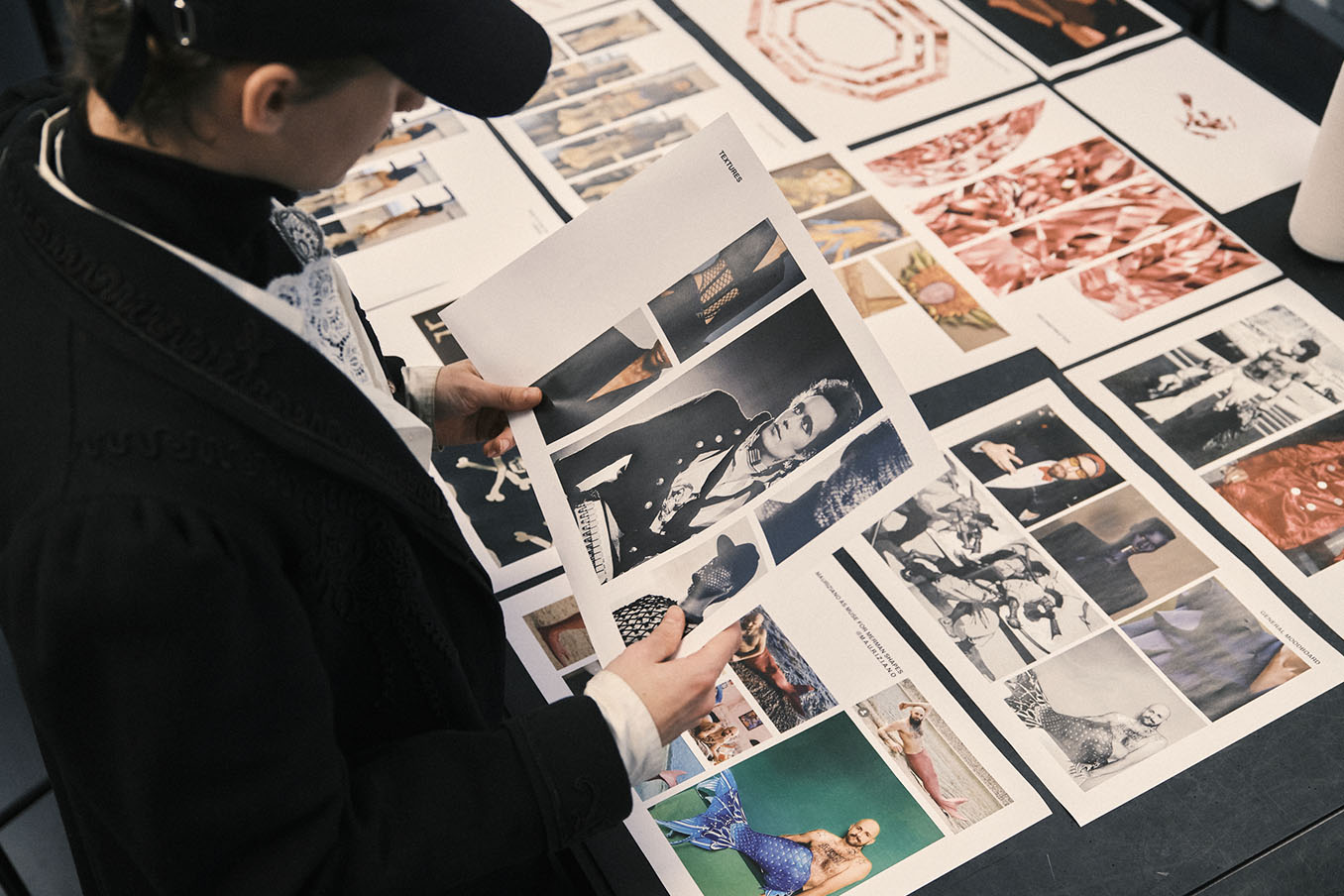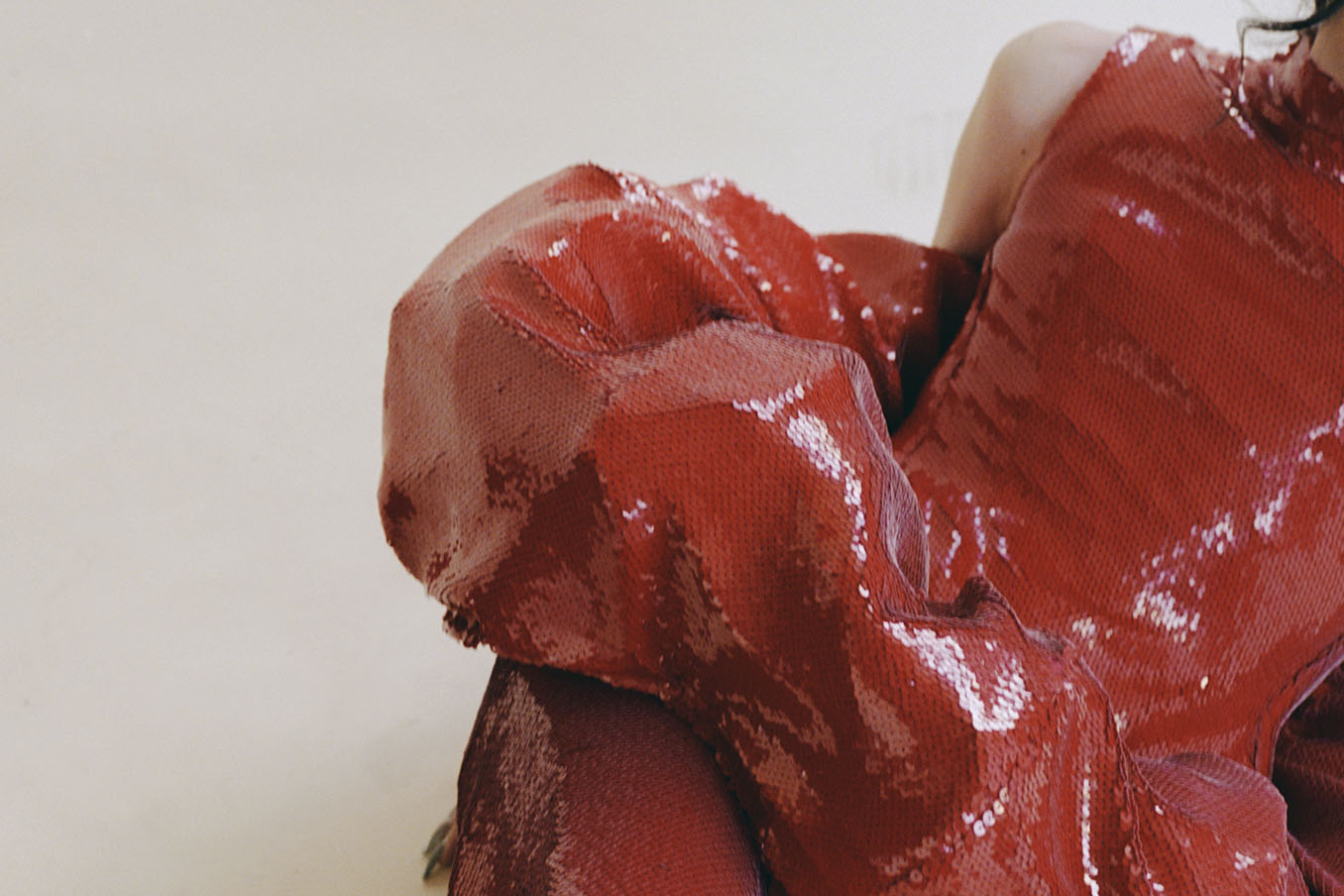The crème de la crème of it all, last-year Undergraduate in Fashion Art Direction students visited Paris for three days, a city that radiates Fashion and Art in the highest form. Certainly filled with adventures and laughter, this journal comprises the daily account of our thrilling journey. We extend sincere gratitude to the school, teachers and our mentor Marc Ascoli for giving us a memorable trip.
Architecture washed in hues of creams, blues and whites, we walked around the populous city towards our first destination, Bourse de Commerce – Pinault Collection visiting the exhibition entitled Avant L’orage Curated by Emma Lavigne, the CEO, and Nicolas-Xavier Ferrand, the assistant curator.
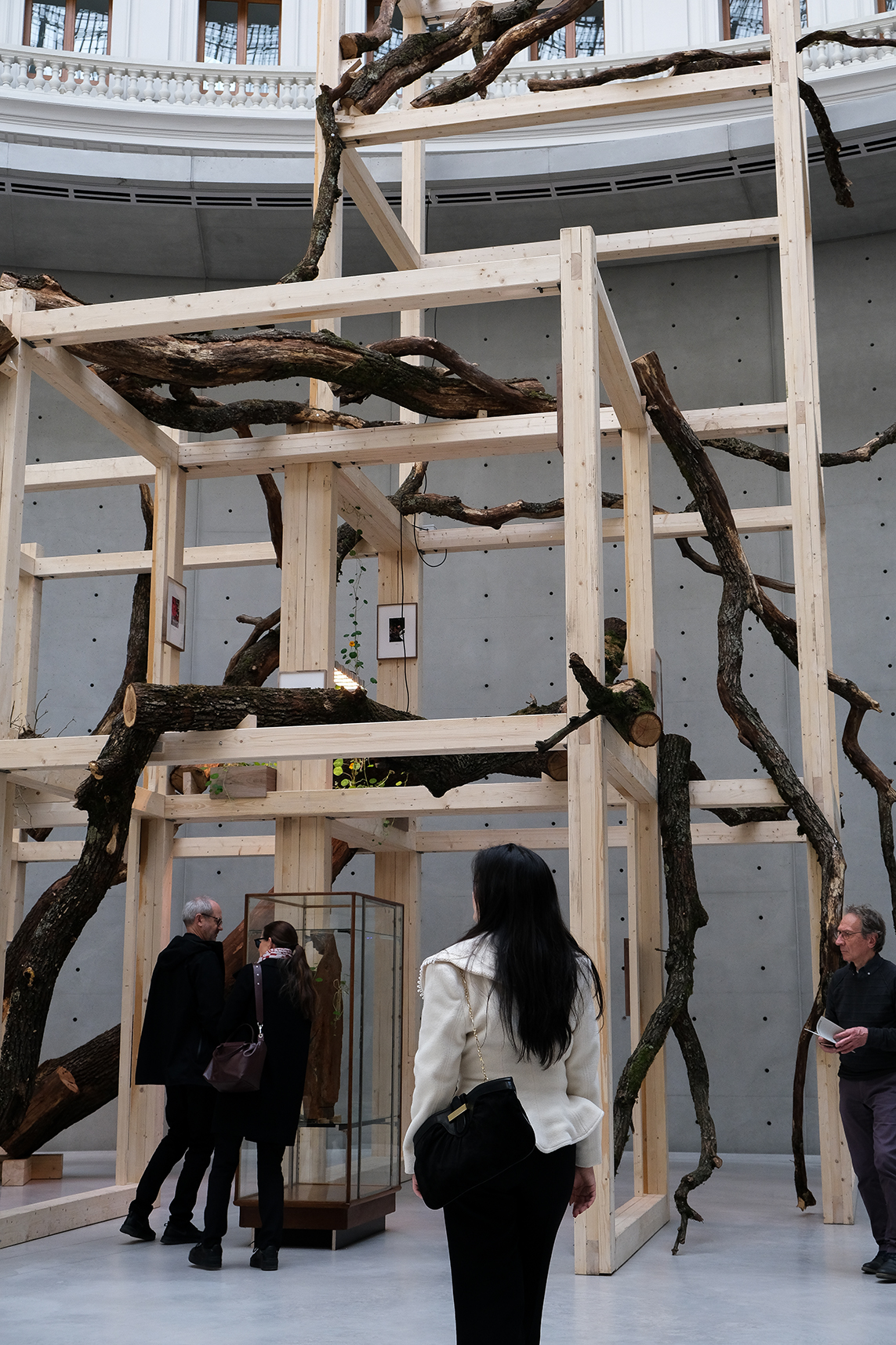
As we enter, sunlight seeps through the skylight dome and beams onto the large-scale, organic sculpture of Art and Nature that is set beneath, enticing people on a journey from ‘shadow to light.’ The space itself holds a connotation to the colonization and intensive global resource extraction since 1889, the building is repurposed into this new form of greenhouse; filled with artworks and exhibitions comprising fifteen artists that give an innovative perspective of re-inventing ecosystems, including Diana Thater, Hicham Berrada, Anicka Yi, CY Twombly, Daniel Steegmann Mangrane, Robert Grober, Alina Szapocznikow and Thu Van Tran…
Captivated by instinct, everyone excitedly began to explore the different floors filled with artwork. The first was a piece by Hicham Berrada titled ‘Présage’. This work immerses us in a dark space and guides us to follow its slow movements through sight and sound, we see and hear the interplay between decaying metals that act as protagonists in an ever-evolving ecosystem. “In ‘Présage’, Hicham Berrada goes beyond the dire for absolute domination of matter,” powerfully voicing the current state of the environment and the behavioral attributes that lead to its destruction.
Moving forward, capturing everyone’s attention, Anicka Yi, an American artist with origins in South Korea work’s enticed us to take out our iPhones. Warmly lit yellow cocoons, almost as textured as papyrus paper, hung throughout the space noting back to her vast creations with unconventional organic matter. It cast shadows of moving robotic insects internally with the projector creatively curated sound emission giving us a full sensory experience into the artist’s atmosphere. The series of paintings ‘that leave for intentions that are not human’ are explored with holography creating a dialogue between the living and artificial.
Soon, a stark black suit jacket hung back-facing against the wall, geometrical square cuts into the top middle of the jacket to an opening of a stone waterfall. Truly a new symbol of urban modernity that Robert Grober’s created; revitalizing our perception of ordinary elements. An honest piece that made us want to stand for hours and appreciate the ‘quiet’ escapism.
Alongside, Diana Thater’s work juxtaposes the viewer into observing the night vision of the habitual forest area through an old television set cohesively to the concept the two artists hand-in-hand propose. Both by means, creating an illusion between things that are made purposely to observe; the hidden and revealed.
The exhibition overall explored the interiorized relationship to landscape to elaborate the blurred visions of nature, breaking free from the shackles of modernity each artist experiences.
Leaving the museum, we were on our way to the next, Palais Galliera Musée De La Mode observing the exhibition that titles and focuses on re-living the significant events from an important year in fashion history 1997, FASHION BIG BANG. We were welcomed by renowned Creative Director, Marc Ascoli, who was a fashion pioneer with his expertise in pushing meaningful storytelling in editorials and creating influential images by uplifting some of the most forward-thinking photographers of all time, including Nick Knight, Craig McDean, and David Sims, to name a few.
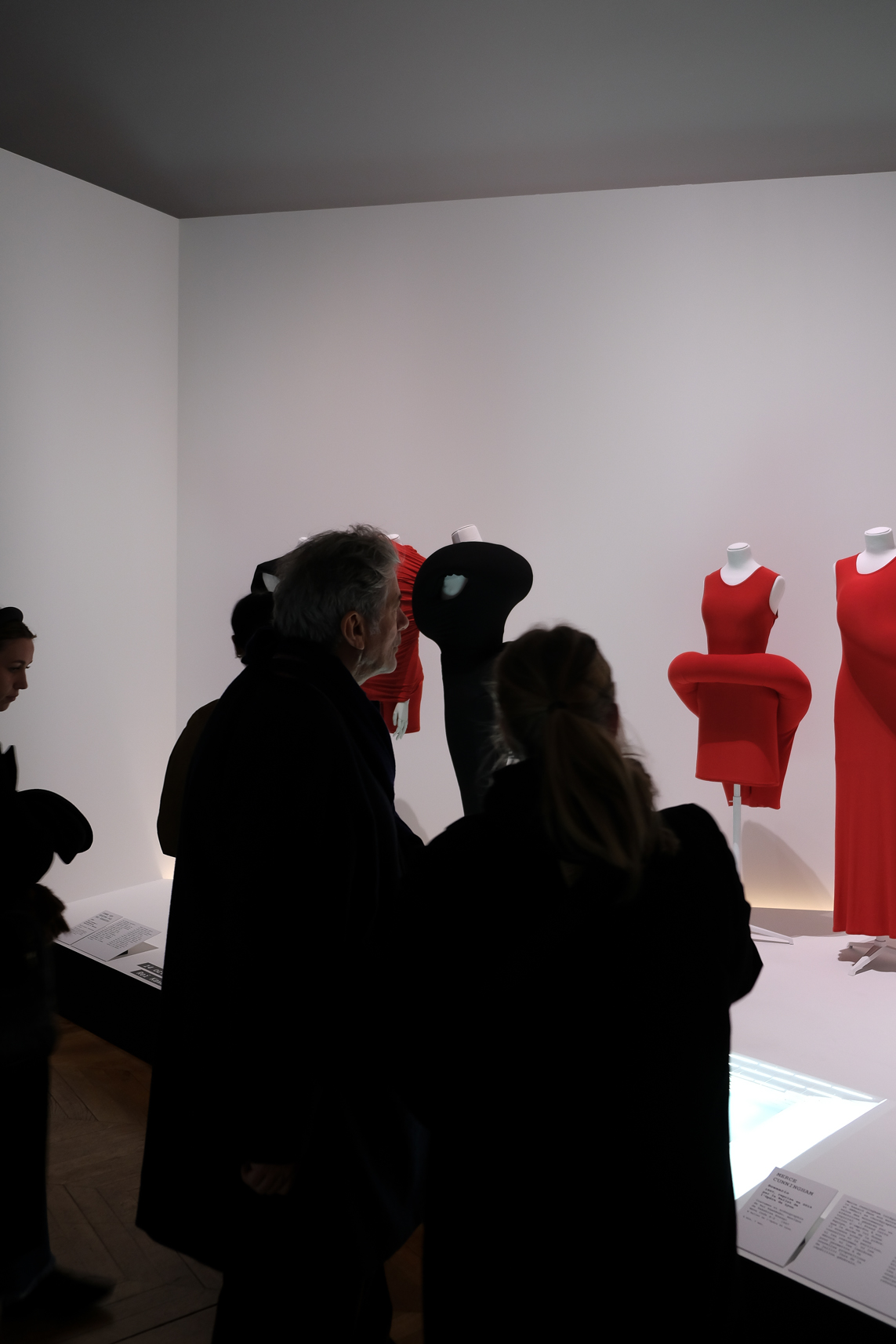
Fashion as a discourse, the exhibition’s curator, Alexandre Samson, gave us a unique view into the emergence of Ready-to-wear, Haute Couture and the process behind some of the most emblematic pieces that are remembered to date by some designers individually including Thierry Mugler, John Galliano, and more, who created the ‘ultimate “Big Bang” that Paris needed to establish itself as the world’s fashion center during a time of economic crisis once more’.
How the world of design and specifically how fashion designers operated back then to what it is now in comparison to the e-commerce brands, fast fashion brands, and style of marketing present currently through the views of Marc Ascoli spoke about true garments focused on quality and preciseness fabricating each designer’s personal stories onto their creations all handmade to give the personal touch for a consumer to purchase and appreciate; undoubtedly, a treasure. Despite the loss of some of the greatest designers, their creations continue to shine and reflect the glory, allowing us to honor them presently.
For instance, exhibiting Martin Sitbon’s collections was the pinnacle of a career that started in 1985 speaking about her profoundly deep dark experiences of her adolescence that showcased in her work allowed the public to understand the storytelling behind the garment and not see it as just an item to wear. Furthermore, the fascination with the distorted silhouettes seen in the Spring/Summer 1997 collection with its radical vision in interaction is another way to learn more about the inspirations that drive in creation of visuals and auditory experiences between movement, garment, and body was explored by Comme des Garçons founder Rei Kawakubo. She investigated the rhythm of bodies through ambulated sounds and movements in collaboration with the American pioneer of abstract dance, Merce Cunningham. Completely well-whelmed, we all wanted to own each item on display and greatly valued the insights learned.
The second day approached, and we visited three different museums, starting with the Alaïa Foundation, which was relatively smaller in size but spoke mighty. Located in the designer’s mysterious workspace, which has remained a secret until his passing on November 18, 2017, becoming public on February 26, the day Azzedine Alaïa was born.
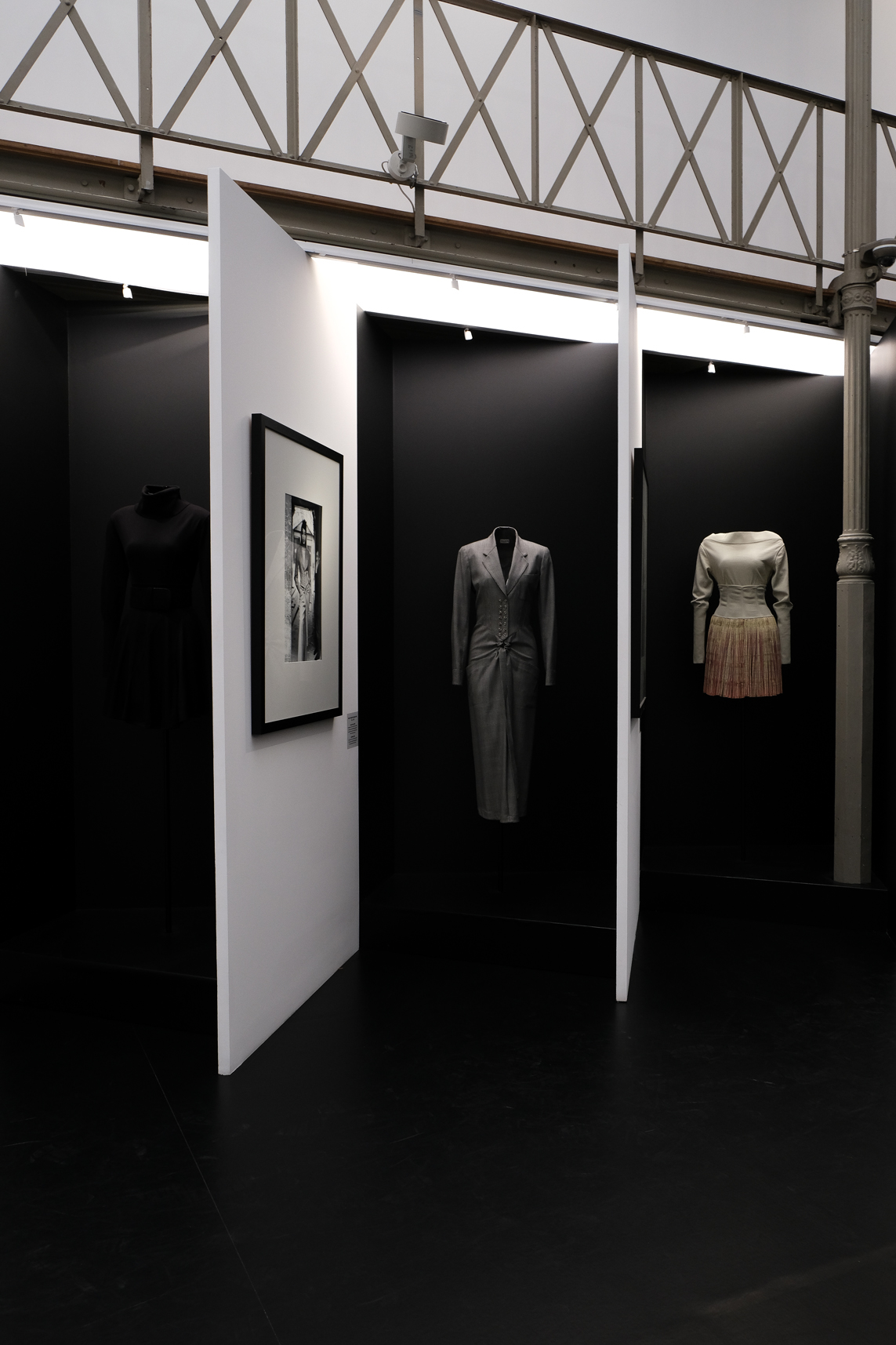
A playful yet sartorial attitude in the spirit of its eponymous designer, Azzedine Alaïa. Alaïa is a renowned Parisian Couture Maison that, beyond fashion, expresses the passion and strength of femininity.
The foundation layout places each editorial shot by American photographer Arthur Elgort, best known for his work with effortless beautiful black and white photography featured in Vogue magazine, next to the iconic garments. Organized in its curation, this layout allows us to properly observe the overall feeling and look of the garment, which we could with time all appreciate.
The determined and strong woman was the main collective portrayal by the photographer and designer. The new forms of figurative and visual expressions are projects through the designer and photographer’s intuition and innovation that are shared with similar characteristics, allowing the lines of the garment and captured ‘pose’ in photography to become ‘one’ entity; a cohesive balance.
To top it all off, we were given access to the workspace where the mood boards, mannequins draped with ‘in progress’ garments, and heaped piles of fabrics were displayed in a proper studio to give us a sense of Alaïa’s reality and enabled us to envision his creative process.
We then headed to the Musée des Arts Décoratifs, located close to the Louvre in the city’s center. The museum has one of the largest collections of decorative art in the world in the areas of Fashion and textiles, Advertising, Graphic Design, Furniture, and Interior design featuring works by contemporary designers and artists like Etienne Robert, Armand, Albert Rateau and more.
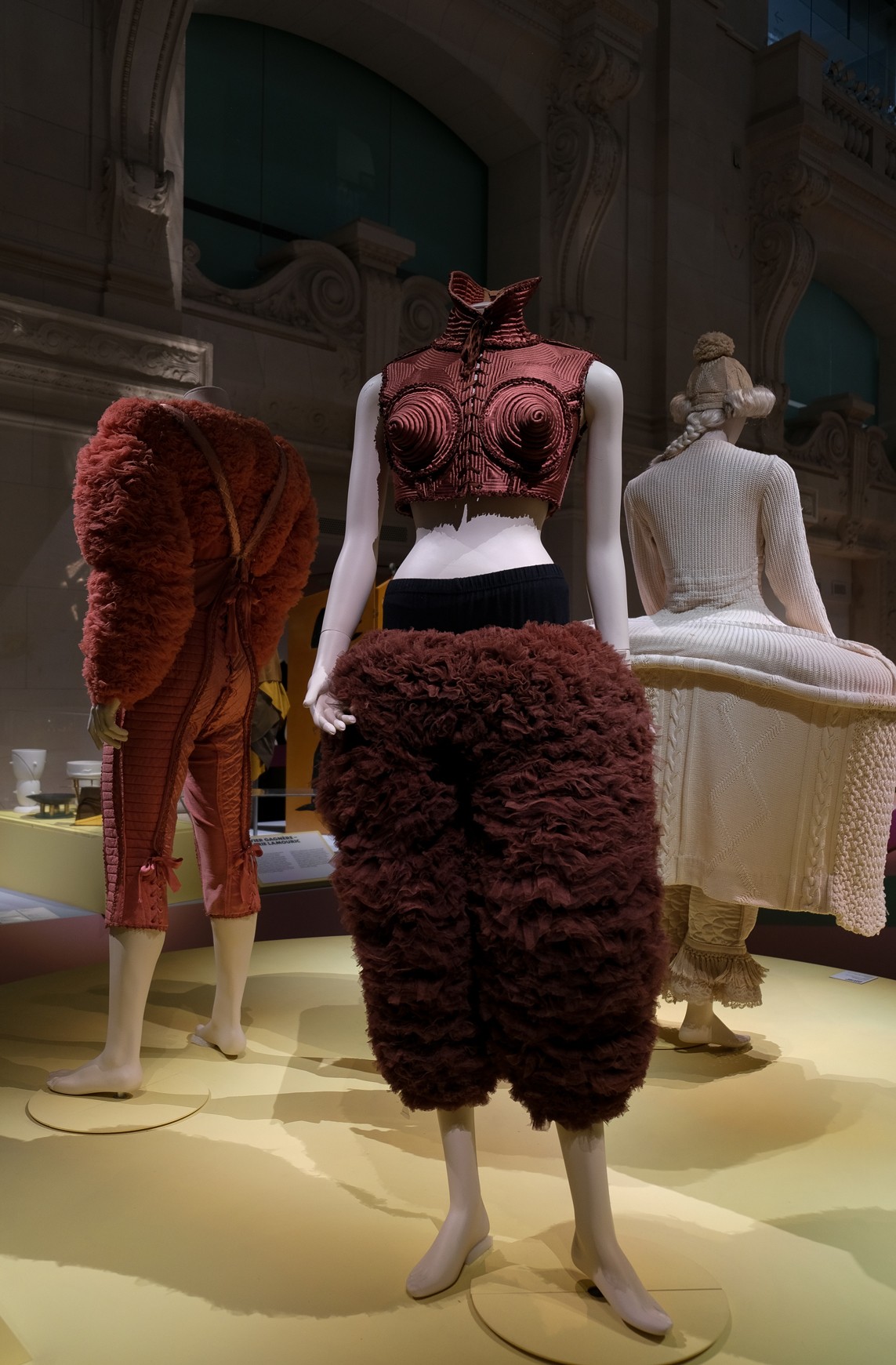
By categorizing seven topics presented in the five major chronological periods, from the Middle Ages to nowadays, and placed spaciously on three levels, we gained a complete snapshot of a particular art of life during the visit. We were able to gradually examine each section as we progressed.
The first floor allowed us to understand the artistic vision influenced in the 1980s in furniture design and graphic design. Fashion and interior elements show the important elements of the type of shape, color, material, and texture allocated to each designer’s means. As well as focusing on particular graphic design styles, especially by Étienne Robial. His ‘Graphisme & collection, de futuropolis a canal’ collection presented the influence on graphic design and ‘its practitioners in France’s image and character, introducing the viewer to the impressive visual savoir-faire of a whole nation’.
We further individually explored the museum’s permanent collection of jewelry design, iconic artefacts, and particular interior design styles that were shown in designated, well-organized little spaces to give an overall view. Viewing the renowned, Jeanne Lanvin’s apartment, designed by Armand Rateau was pleasing to be in as it allowed us to see the various embellishments and the important color scheme that made up the overall design.
We further individually explored the museum’s permanent collection of jewelry design, iconic artifacts, and particular interior design styles that were shown in designated, well-organized little spaces to give an overall view. Viewing the renowned, Jeanne Lanvin’s apartment, designed by Armand Rateau was pleasing to be in as it allowed us to see the various embellishments and the important color scheme that made up the overall design.
To end our second night in Paris, we visited the oh-so-famous Yves Saint Laurent Musèè. Bathed and sparkling rightfully with the exhibition’s given name ‘Gold’.
Yves Saint Laurent’s radiant character radiates this ‘chrono-thematic journey’ through opulent materials and fine fabrics. The show celebrates the empowerment of women; displaying some of the grand pieces that created bold statements and swarmed everyone’s desires. Elevated gold-lustered sculptures by Johan Cretent titled ‘Zwam 3’ were hung across two rooms illuminating the walls throughout the museum.
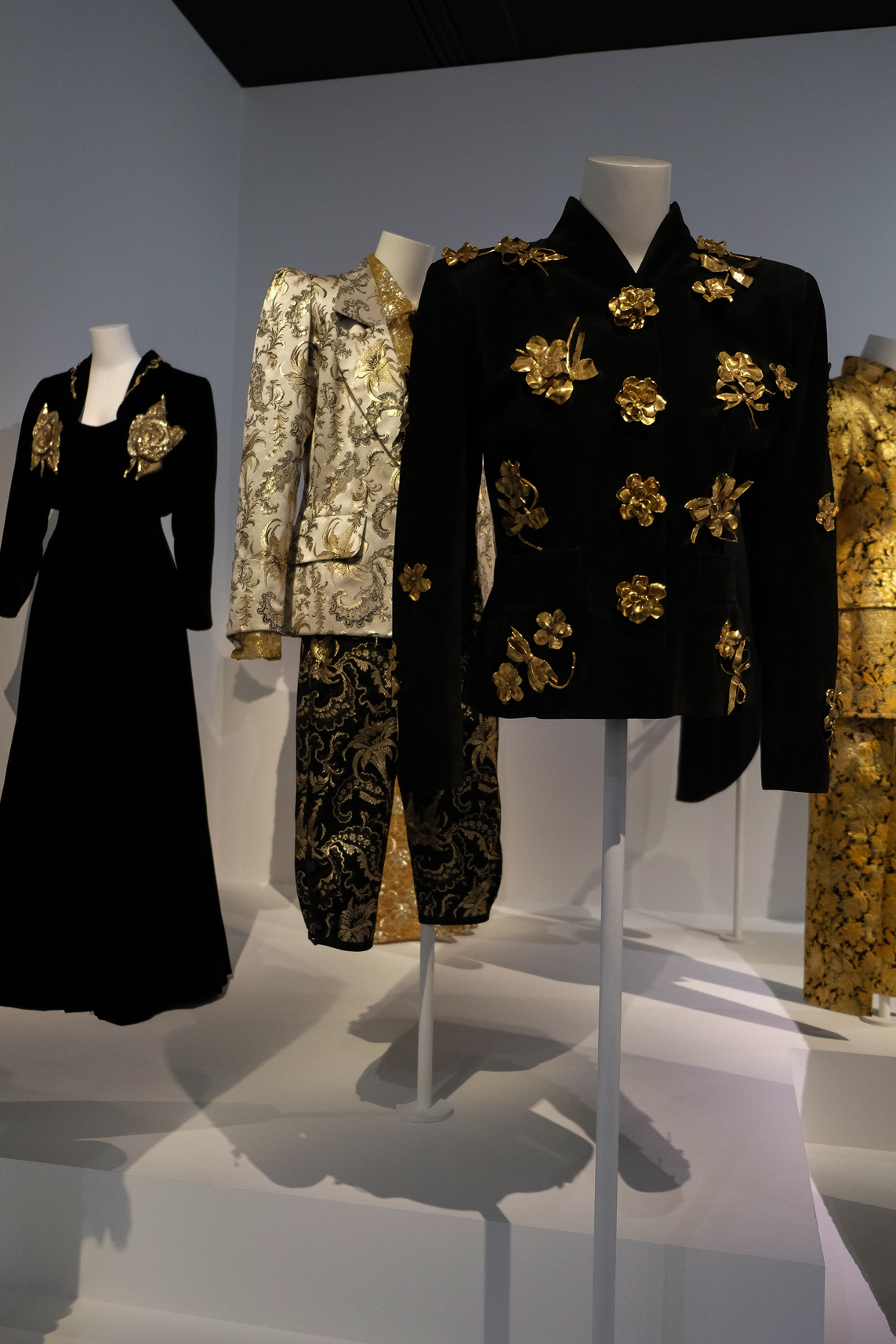
Hung glistening jewelry varying in uniqueness in each piece such as the golden breastplate molded so craftily and fabrics framed against numerous walls. We never wanted to leave the museum.
Lastly, observing the visual time capsule and the layout of the working studio showcasing the YSL world from the 1990s to the current period with informative profile information was very engaging. Channeling the ‘Palace club years and that festive era’. The inspiration and electric energy behind the pieces were astonishing and a great way to end the night.
Finally, on our last day, we visited the exhibition of South African visual activist and self-portrait photographer/ artist, Zanele Muholi, at the Maison Européenne de la Photographie.
Stories of both personal and collective, Zanele Muholi aspires to bring prominence to the people ‘while challenging conventional stereotypes and representations’, bringing to light literally through the portraits that seemed glowing on the walls with the uniqueness and diversity of the individuals pictured.
Muholi highlights bravery and dignity through facing discrimination and intolerance considering the period during the 1990s when South Africa underwent a significant social and political change. As well as the continuing present-day effects. The exhibition was so moving that a few people started crying because of the strong message that permeated every single presentation.
Leaving our last destination on a touching note, we were grateful for the experiences we got to create individually through the many places and the honorary people we met to understand the journey each museum brought to life. Filled with emotions, and certainly a great memory of a bonded trip as our graduating year at Polimoda.
Credits
Written by Hrishika Dugar, Undergraduate in Fashion Art Direction student
Visual storytelling by María Sól Kjartansdóttir, Undergraduate in Fashion Art Direction student
SPECIAL THANKS
Marc Ascolì, Creative Director and last-year Undergraduate in Fashion Art Direction mentor
Alexandre Samson, 1997 Fashion Big Bang curator
Azzedine AlaÏa Foundation
Borse de Commerce, Pinault’s Collection
Maison Européenne de la Photographie
Musèè des Arts Decoratifs
Musèè Ives Saint Laurent Paris
Palais Galliera, Musèè de la Mode
